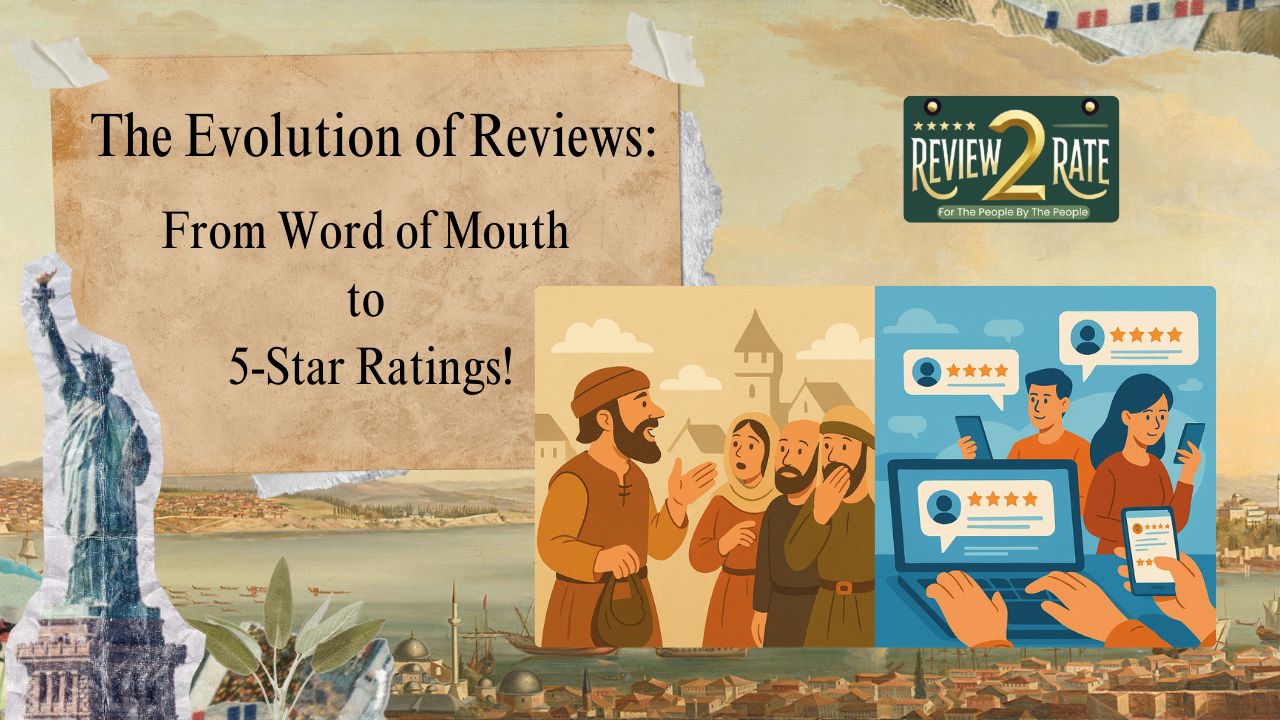
Published: March 26, 2025
Customer reviews have come a long way from whispered opinions at the market to the clickable stars we see online today. They’re not just feedback anymore—they’re a driving force behind what we buy, where we eat, and even how we travel. But how did we get here? Let’s take a journey through the evolution of customer reviews and see how they’ve shaped the way we shop in the digital age.
Long before the internet, reviews were as simple as a neighbor saying, “That baker’s bread is worth the walk.” This word-of-mouth system relied on trust—people shared honest opinions with friends, family, or locals they knew. It was personal, unfiltered, and limited to small circles. Businesses thrived or faltered based on these quiet conversations, but there was no way to scale the chatter beyond a village or town.
Fast forward to the 18th and 19th centuries, when newspapers and magazines started publishing critiques. Suddenly, opinions about products, books, and plays weren’t just for your neighbor—they were for anyone who could read. Professional reviewers became tastemakers, and the history of product reviews took its first big leap. Still, these were one-way conversations; everyday customers didn’t get a say unless they wrote a letter to the editor.
The 1990s changed everything. With the rise of the internet, platforms like Amazon and eBay gave regular people a megaphone. For the first time, you didn’t need to be a journalist to share your thoughts—anyone could post a review. This shift from word of mouth to online ratings democratized feedback, making it accessible and instant. Shoppers could now read dozens of opinions before buying a single item, and businesses had to adapt fast.
Enter the 5-star rating system—a game-changer in the 2000s. Sites like Yelp, TripAdvisor, and Google made it easy to sum up an experience with a quick click. Stars simplified decision-making: 4 stars good, 2 stars bad. But it’s more than just numbers. Studies show that how reviews influence buying often hinges on those stars—88% of consumers trust online ratings as much as personal recommendations, according to a 2023 survey. It’s word of mouth, but louder and faster.
Today’s reviews aren’t just about sharing—they’re about power. A single 5-star rating can boost a small business, while a 1-star rant can tank it. Shoppers rely on them for practical advice, like whether that blender really blends or if that hotel’s “ocean view” is a scam. The 5-star rating system impact is huge—it’s a universal language that cuts through the noise of endless options.
But it’s not perfect. Fake reviews, bots, and paid endorsements have muddied the waters, making it harder to trust what you read. Still, the core idea remains: reviews connect us, inform us, and help us choose wisely.
Want to make the most of this evolved system? Here’s some practical advice:
Where do reviews go from here? Think AI-generated summaries, video testimonials, or even virtual reality “try-before-you-buy” experiences tied to ratings. The evolution of customer reviews isn’t over—it’s just getting started. As technology grows, so will our ways of sharing and trusting opinions. One thing’s for sure: whether it’s a shout across the fence or a tap on a screen, reviews will keep shaping how we shop.
Next time you’re scrolling through ratings, remember: you’re part of a centuries-old tradition, remixed for the digital world. What’s your take—how do you use reviews to decide?